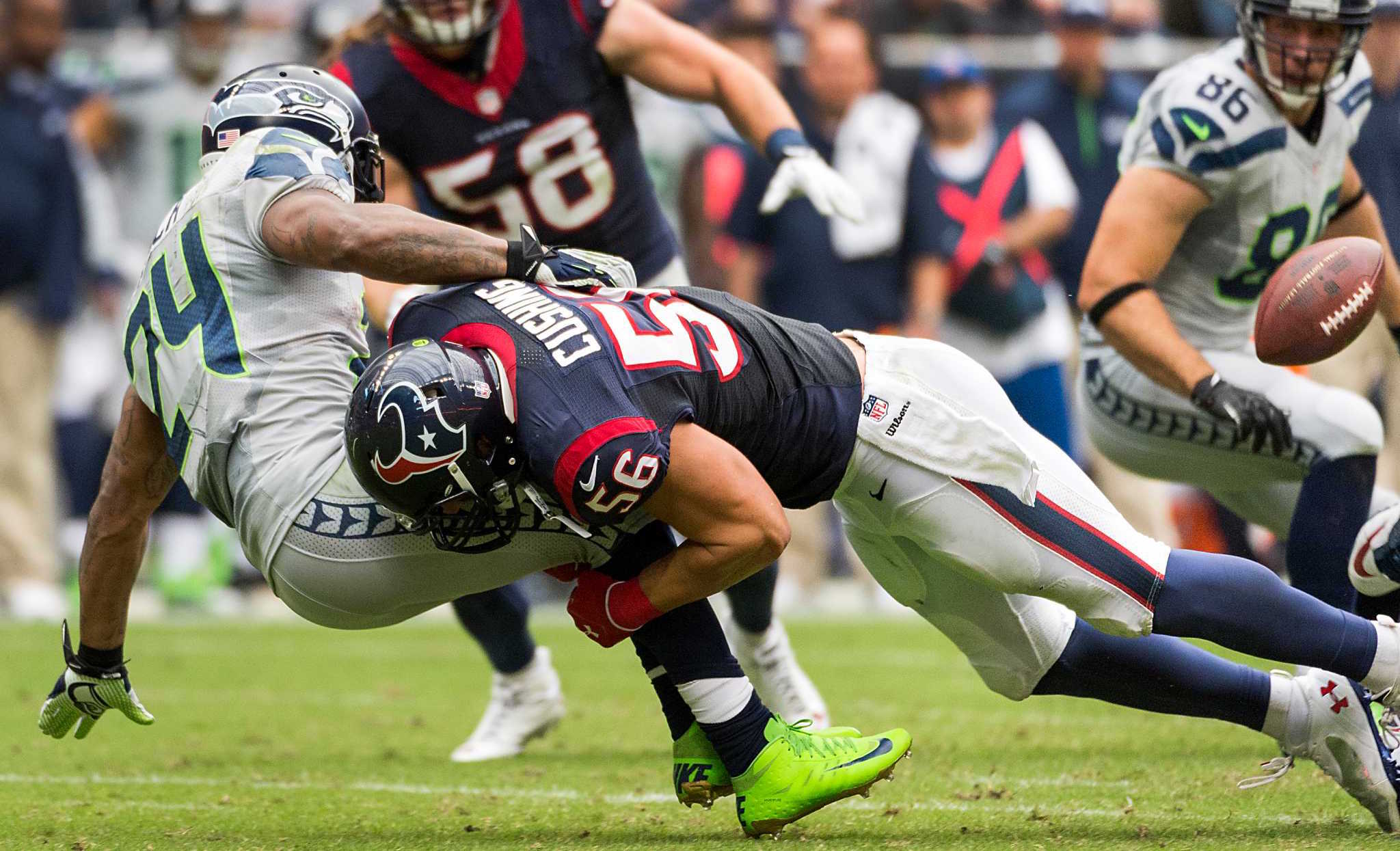
300-yard shuttles…Sixteen 110-yard sprints…”Gassers”…
For as long as I’ve been alive, the above three drills have been considered the ‘Gold Standard’ in football conditioning. I have no clue how these “tests” came about or why they just won’t go away. But, hopefully this blog post will start somewhat of a revolution regarding football conditioning…THE RIGHT WAY!
Although I posted a rant (6 years ago) about how disgusted I was with most high school, college & professional football programs and their idea of “football conditioning”; I guess I didn’t give away enough answers as to how we were specifically conditioning our football players at my facility. Since six years have passed and not much has changed, I decided to revisit this topic with the hopes of truly making a difference in how strength & conditioning coaches train their football players. This time around I’m not only going to discuss the problem, I’m going to provide you with the specific answers to fix the problem!
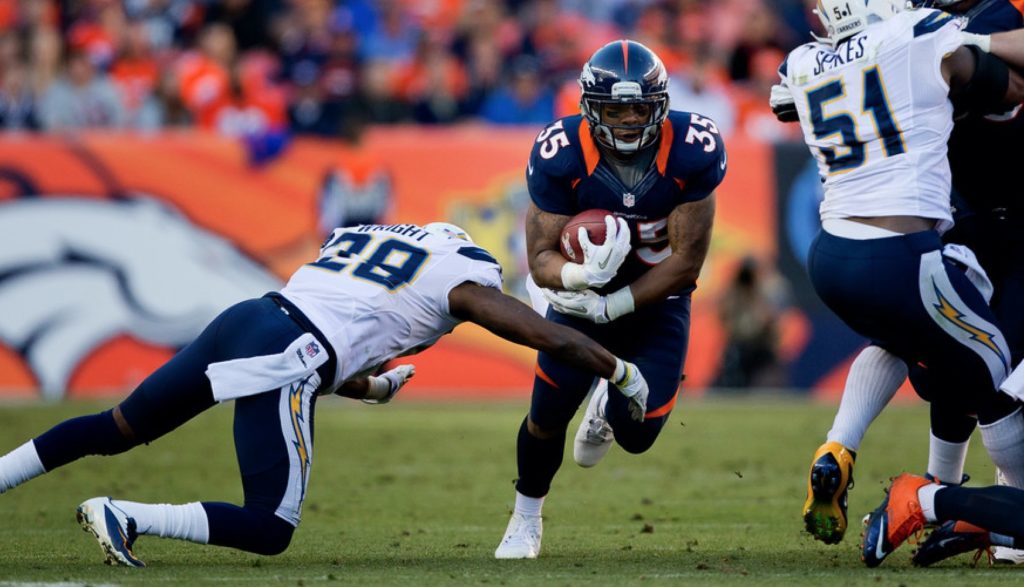
OK, let’s tackle this topic…
Call me a nerd, but on numerous occasions I’ve watched an entire football game with my trusty stopwatch in hand and I’ve timed everything — average length of a play, average rest between plays, length of TV timeouts during NFL & NCAA games, average rest between each series, length of halftime, etc. Just for shits and giggles, I did this again today while watching the Giants game in preparation of writing this blog post. Here are the highlights:
Average play = 5.5 seconds
Average rest between plays = 32 seconds
Time between last play of 1st Half and first play of 2nd Half = 18 minutes
The above information shouldn’t surprise anyone – even a casual fan. You also don’t need a PhD in Exercise Physiology to figure out that the most important energy system that’s called upon when playing football is the anaerobic energy system. (FYI, energy systems don’t just abruptly “shut off and turn on” like many people think. But, for the purpose of this article and the coaches I’m trying to reach, I want to keep it simple and focus on the anaerobic system.)
Here’s the “catch” with regards to the anaerobic system — this is where most coaches go wrong when conditioning for football. (Don’t worry; this won’t be too technical. Stay with me for a couple more seconds, then we’ll get to the fun stuff!) There are two types of anaerobic systems:
#1) The ATP-PC System (Alactic): This system doesn’t require or produce oxygen. It’s used for quick, explosive activities that last up to 10 seconds.
#2) The Anaerobic Glycolysis System (Lactic): This system doesn’t require oxygen either, but it does produce lactic acid. It’s used during activities that last between 10 seconds to 1 minute.
Going back to the three most popular football conditioning tests (110’s, gassers, 300-yard shuttles); you can see that they fall into the Anaerobic/Lactic System because they take approximately 15 seconds to 1 minute, respectively, to complete.
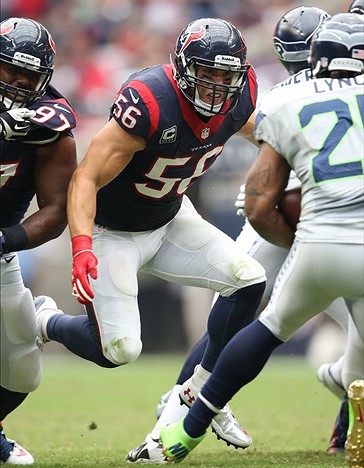
Why the hell are coaches choosing exercises/tests that take up to 1 minute to complete, when it’s a fact that the average football play lasts only about 5 seconds?!? Even an unusually “long” football play will only last 10-11 seconds! Yet, the most popular football conditioning tests measure the efficiency of the athlete’s Anaerobic/Lactic system, even though football is an Anaerobic/Alactic sport!!! Strength & conditioning coaches are basically comparing apples to oranges. It’s a shame because there’s football players every summer who fail their conditioning test during training camp, even though they’re actually in “real” football shape!
Here’s the deal: I’m calling out all the football strength & conditioning coaches that read this — I challenge you to start designing all your conditioning/energy system workouts and testing protocols specific to what’s actually required during a football game!! Simply put, from this point on, your athletes should be focussing on exercises that require 4-10 seconds of intense activity, followed by 20-40 seconds of rest. Some good examples of exercises that fit into this category are sprints, sprints with changes of direction, resisted sled/prowler sprints, overcoming a resistance (like flipping a tire) then sprinting, jumps into a sprint, reacting to a visual cue, etc. You can get creative with your exercises…you’ll see in the video below that I like coupling strongman-type exercises with short, explosive sprints. You’ll also want to tweak things according to position. For example, skill position players should be performing “longer” sprints then the lineman, etc. The options are truly endless.
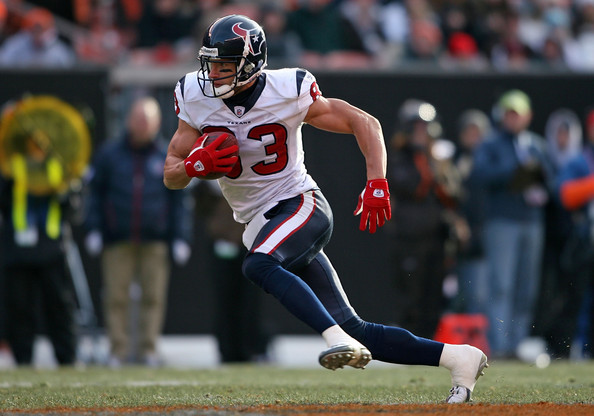
Performing repeated bouts of these types of explosive activities will get you in true football shape. These types of activities will actually develop speed, power and anaerobic football endurance, as opposed to taking away from your speed and power by running mid and long distances.
(And FYI, before all you “hardcore” coaches get your panties in a bunch — there’s nothing wrong with an occasional “ball-buster”, either. At my facility, we still love an occasional “prowler suicide”, as well as other “challenges” that last longer than 10 seconds to complete. BUT, they are done sparingly when we need to prove a point, see an athlete’s true character, or we’re just bored 🙂 But, as all the athlete’s that train with us will tell you; 99% of the time we’re performing repeated bouts of explosive activities!)
Below you’ll find Brian Cushing’s “gameday conditioning” workout from this past weekend, along with some video highlights from the actual workout. For the past 3 weeks, I’ve been having Cush perform a “gameday-specific” energy system workout at the end of his training week. The goal of this workout is to mimic “Sunday” the best we can and get him in “football shape” while he’s not able to play football. I thought that seeing the actual workout (on paper), along with some video highlights of the workout, would make it much easier for everyone to understand this type of training. It should also help coaches/trainers “think outside the box” regarding their exercise selection and program design.
For this specific workout, you’ll notice it’s separated into “quarters” and the exercises are thought of as “plays” during a series. Since Cush’s return to action is getting closer, these conditioning workouts are getting more and more “specific” to the energy required on Sunday’s…
FYI, Cush averaged 62 plays a game last year, so my goal is to get the volume of these conditioning workouts to 62 “plays” (sets) by the time he’s one week out from his return. You’ll see I had him perform 52 “plays” (sets) during our most recent workout. His stamina looked great and he shouldn’t have too much of a problem with the 10 “plays” I’ll be adding next week before he heads back to Houston. (He’ll also get a week of truly “specific” training/conditioning with pads, etc., when he joins the team for a full week of practice on Monday, October 4th.
[Before I share this workout with the world, I want to publicly thank Brian Cushing for letting me post one of his personal workouts on this blog. Most professional athletes that hire a private coach to design their workouts wouldn’t appreciate the coach posting their workout – for FREE – on the internet. But, Cush was cool with me sharing this information; he realizes how many of his fellow athletes may be ‘saved’ if we can get this training info out there.]
Read through the workout below and then check out the video highlights that follow. I think seeing some of the exercises after reading about them will help make more sense of it all.
THE WORKOUT…
“1ST QUARTER”
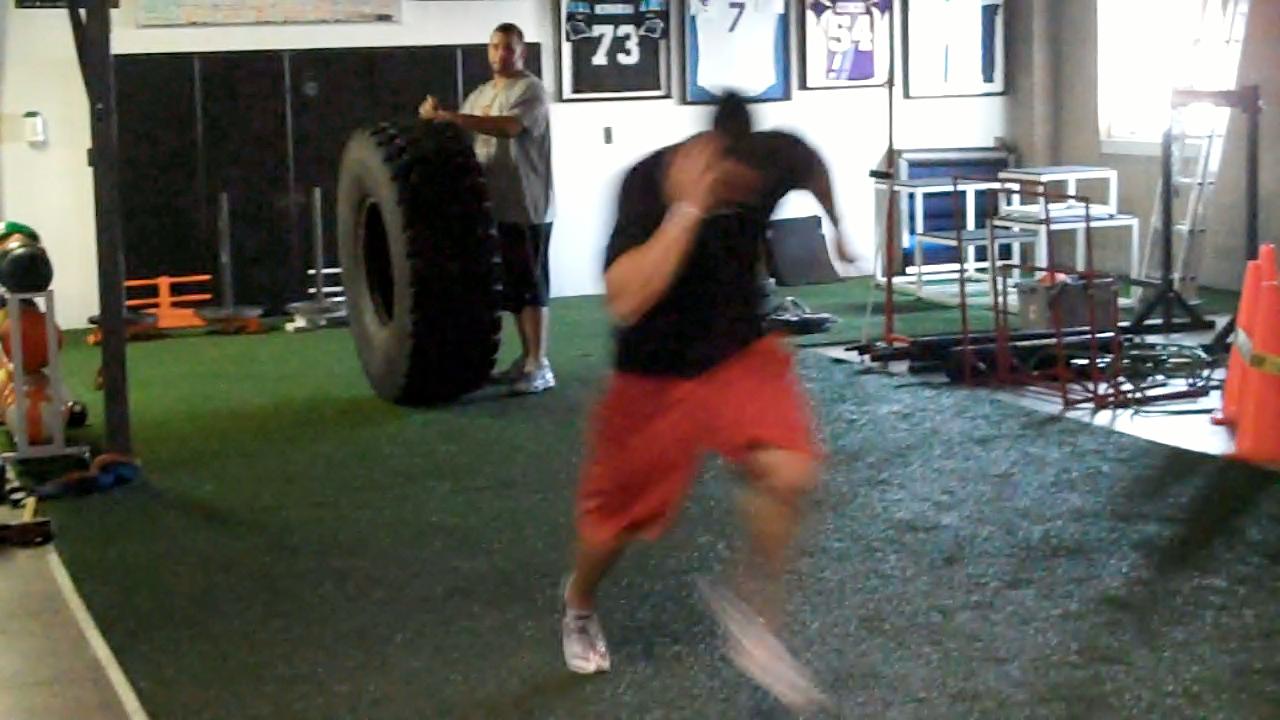
“1st Series” – Tire Battle into 10-yard sprint: 4 sets, 30sec. rest b/t sets. After the 4th set, rest 2min.
“2nd Series” – Tire Flip-Sprint-Tire Flip: 4 sets, 40sec. rest b/t sets. After the 4th set, rest 2min.
“3rd Series” – Tire Battle into 5-yard sprint: 4 sets, 20sec. rest b/t sets.
*Rest 4 minutes between quarters.
“2ND QUARTER”
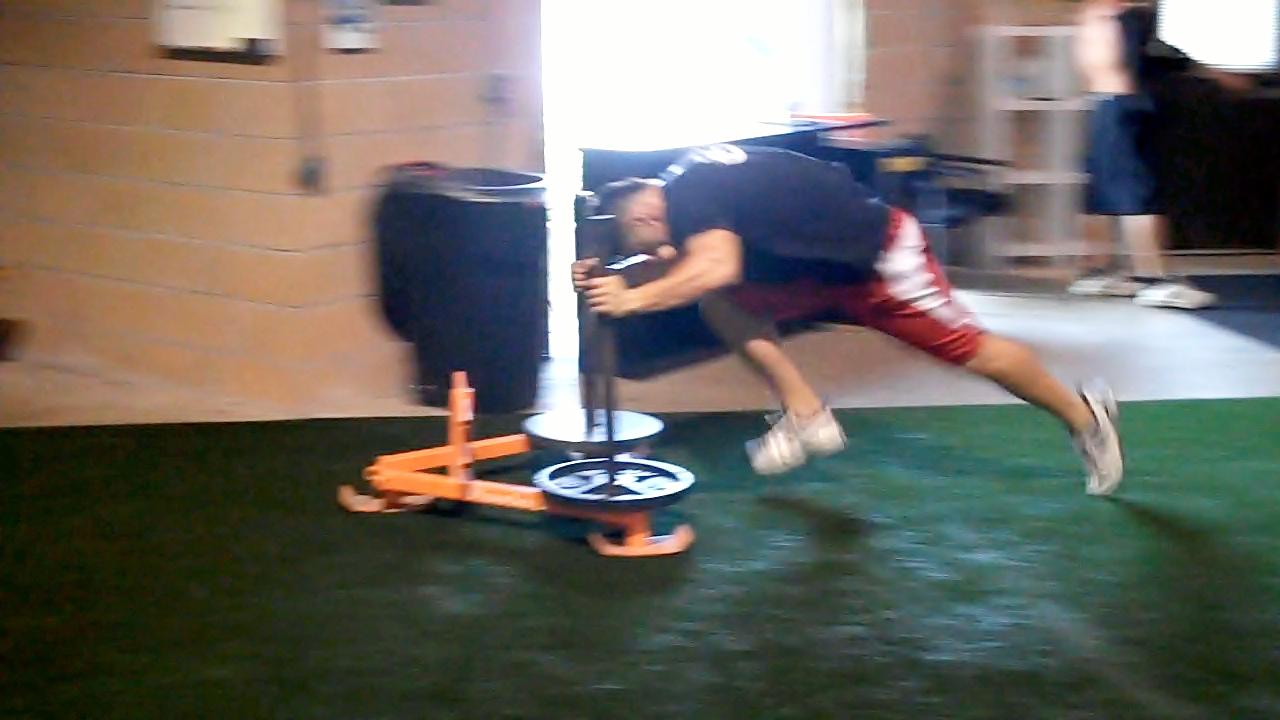
“1st Series” – Hand-over-Hand Rope Pull into Prowler Push: 4 sets, 40sec. rest b/t sets. After the 4th set, rest 3min.
“2nd Series” – Resisted TredSled Sprints: 5 sets of 6sec. w/ 40sec. rest b/t sprints. After 5th sprint, rest 3min.
“3rd Series” – Hand-over-Hand Rope Pull into Prowler Push: 4 sets, 40sec. rest b/t sets.
REST 5 minutes between quarters.
“3RD QUARTER” (Wearing 12lb. Weight Vest)
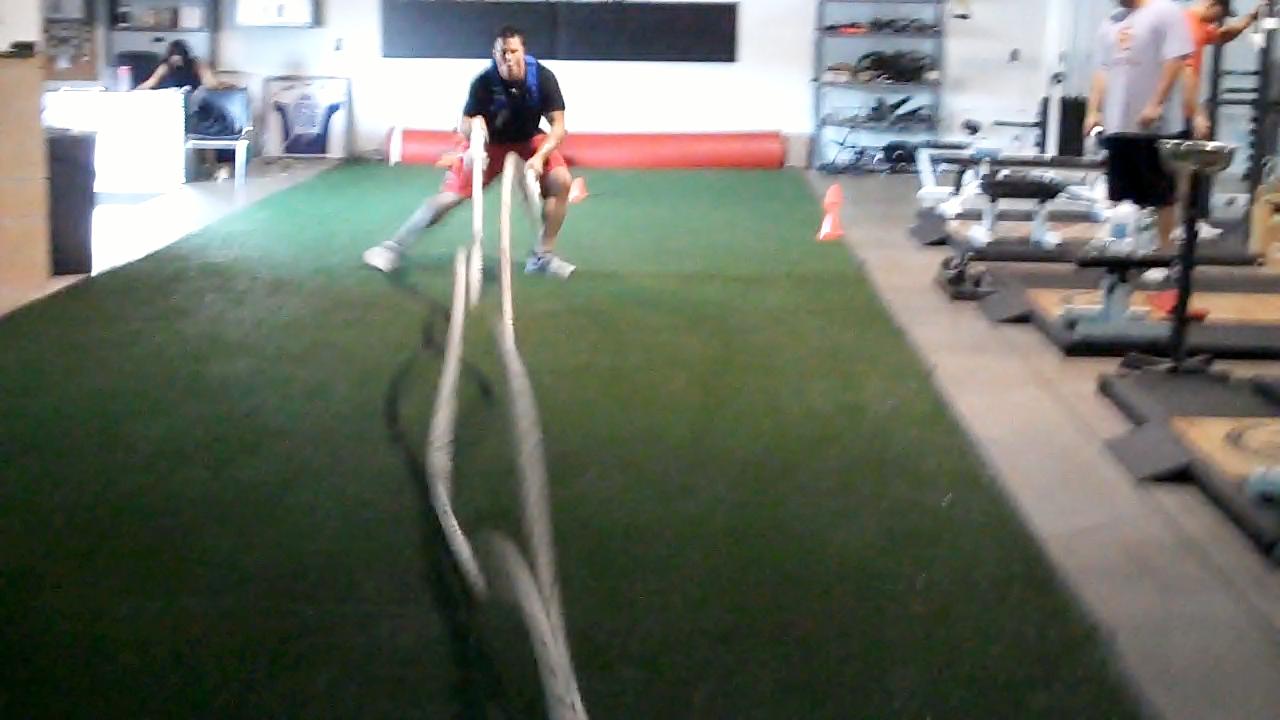
“1st Series” – Rope Battle ‘Quick Waves’ w/Side Shuffle: 6 sets, 20sec. rest b/t sets. Rest 2min. after 6th set.
“2nd Series” – 60-yard shuttle: 2 sets, 40sec. rest b/t sets. Rest 4min. after 2nd shuttle.
“3rd Series” – 20-yard (side shuffle) Pro Shuttle: 6 sets, 30-40sec. rest b/t sets.
Rest 4 minutes between quarters.
“4TH QUARTER” (Wearing 12lb. Weight Vest)
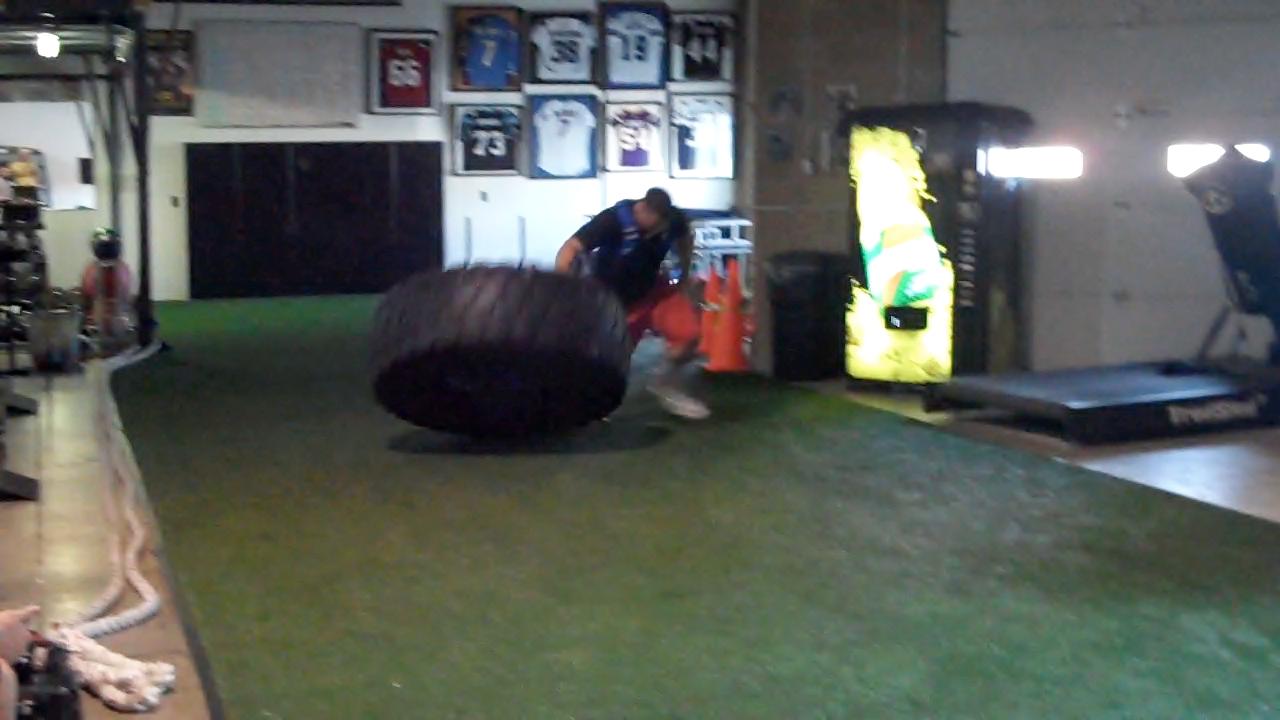
“1st Series” – Tire Flip-Sprint-Tire Flip: 5 sets, 30sec. rest b/t sets. Rest 3min. after 5th set.
“2nd Series” – Tire Battle into 10-yard sprint: 4 sets, 30sec. rest b/t sets. Rest 2min. after 4th set.
“3rd Series” – 15-yard Resisted Sled Sprint (resistance around waist): 4 sets, 20sec. rest b/t sets.
[All exercises performed during this workout required 5 to 10.5 seconds of explosive work. The two 60-yard shuttles were thrown in the 3rd Quarter to experience two “longer plays” (11.5 seconds & 12 seconds) while in a fatigued state.]
*The video below shows the following four exercises from the above workout (in this order): Tire Battle into 10-Yard Sprint, Hand-Over-Hand Rope Pull into Prowler Push, Rope Battle ‘Quick Waves’ w/ Side Shuffle, Tire Flip-Sprint-Tire Flip
Hopefully you enjoyed this “inside look” at how we train our football clients here in the Dirty Jerz!
But, here’s what I would like to do in order to make this blog post truly valuable…
You’ve now seen a few of the unique exercises we perform, as well as one of the ways we structure an actual Energy System Football Workout. Hopefully this stimulated everyone’s thought process regarding how to get in “football shape”. Now it’s time for all of us to come together and change the game forever…
My goal is to use this blog post to create dialogue/exchange ideas regarding a new breed of “football conditioning” tests! In other words, instead of 16 110’s in less than 15 seconds with 45 seconds rest; what would YOU like the test to be? Does performing two 300-yard shuttles with 2 minutes rest make any sense to YOU??? If not, what do YOU think makes more sense?
I’d love to hear your thoughts & suggestions, so please feel free to drop me a comment below!
– Joe D.





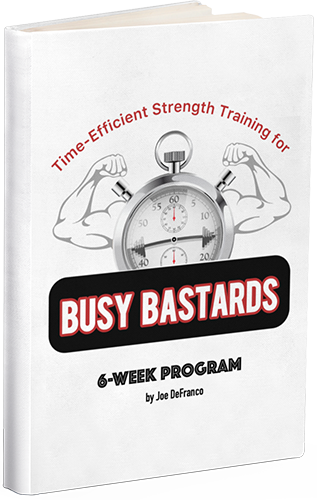
Hello all, here every one is sharing these kinds of experience, therefore it’s good to read this webpage, and I used to pay a quick visit this
weblog everyday.
Great work out
Joe… just watch thank you for always sharing such valuable knowledge … with all of your success you still always remain so gracious! I took the FST course at your gym couple back in 2012… Great experience!… take care and God bless !
Todd Williams
How would you modify this conditioning to accommodate 60 athletes at one time?
Bravo! It is such a treat to actually have someone with some common sense and knowledge marry both into a functional argument! As a swim coach for 30 years and now a parent of a high school volleyball wannabe, I can’t tell you how much I appreciated reading this right now.
Gassers, 240s, 300 shuttle are vital components of conditioning my team. Yes, some of the short spurt workouts listed here are used as well, but them by themselves would spell trouble for small high school teams.
Players at high school level, especially smaller schools, need aerobic training–some will be starting offense, defense, and half the special teams—they need endurance training.
Conditioning is not just about training the body, but making mentally tough athletes. Running 10 gassers as a team is where the team is built. If you don’t bleed with each other you won’t work as hard for each other.
I disagree that the more traditional conditioning is the “wrong way” for many teams, especially at the high school level.
Aw, this was an incredibly good post. Taking the time and actual effort to
create a top notch article… but what can I
say… I put things off a whole lot and never seem to get anything done.
Wow, that’s amazing. A veteran of STG, I’m assuming.
I enjoyed reading the article on the football conditioning the right way but i am unable to see the video of how some of the drills are done. Namely what is the tire push and prowler push? Is there any way I can view those videos that you mention for each quarter? Thank you.